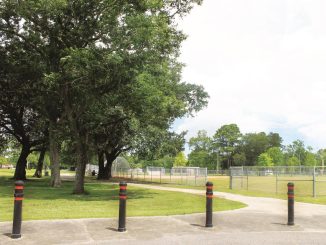
By Dan Gill, LSU AgCenter Horticulturist
Pruning is one gardening job that is often neglected because gardeners are not exactly sure what to do. Now is an excellent time to evaluate your landscape for pruning that needs to be done, since many plants can be pruned now through February.
There will always be plants that grow larger than we anticipated and need to be regularly pruned to control their size. Dead branches, diseased tissue and insect infestations may be pruned for the health of the plant. Then there are special situations such as topiary, espalier and bonsai where careful, selective pruning is used to completely alter the plant’s normal growth patterns.
A wide variety of plants may be pruned during the winter and early spring. You should avoid extensive pruning of spring-flowering trees and shrubs. These plants have already set their flower buds for spring bloom, and any pruning done before they bloom will reduce the floral display these plants will produce. Summer-flowering trees and shrubs do not have flower buds set on them now. As a result, they may be pruned during winter and early spring and will still bloom well.
A few shrubs, including gardenia, hydrangea, some old garden roses and climbing roses, are in a category of their own. They bloom in early summer, but they have already produced their flower buds or flowering shoots for next year. Extensive pruning from now until they bloom will greatly reduce or eliminate flowering next year. To avoid problems, prune these plants in midsummer, soon after they have finished blooming.
Each plant is different; the desires and needs of each gardener are different, and each situation is unique. You can at least make sure you prune at the proper time.
You can also become familiar with the basic pruning techniques used to shape and control plants. Heading back involves shortening shoots or branches and stimulates growth and branching. Often overdone by some gardeners, careless heading back can destroy the natural form of a plant in situations where the natural shape is desirable.
Shearing is a specialized type of pruning that is done with a pruning tool called shears. This technique is used to create geometric shapes, espalier or topiary common in formal landscape designs. Shearing should not be used for general pruning purposes such as controlling size.
Thinning out removes shoots or branches at their point of origin, either back to a branch fork or back to the main trunk.
The only way to gain confidence in pruning is to do it. Practice makes perfect, as that saying goes. The first step to gaining confidence is to ask, and fully answer, two questions before pruning begins.
First, why, specifically, do you feel this plant needs to be pruned? Or, what specific goal do you want to accomplish? What problem do you need to correct? If you can’t come up with a good reason to prune a plant, leave it alone. Second, how do you need to prune the plant to accomplish the goal? Study the plant carefully and decide what specifically needs to be done before you begin.
It is unlikely that you will kill or permanently damage a plant under most circumstances, even if you do something wrong when you prune. So, grit your teeth and go for it.
The more you prune, the better and more confident you will become.




Be the first to comment